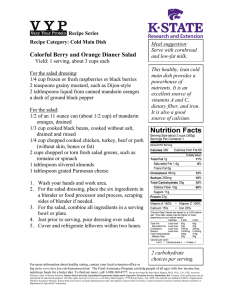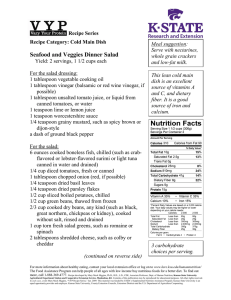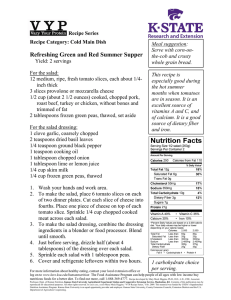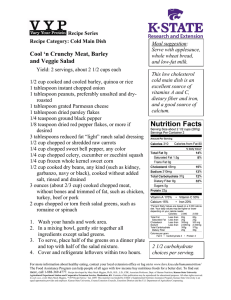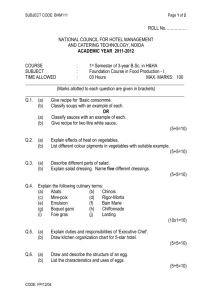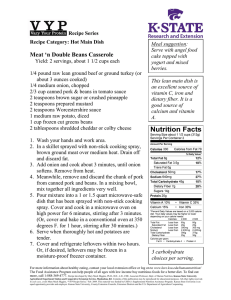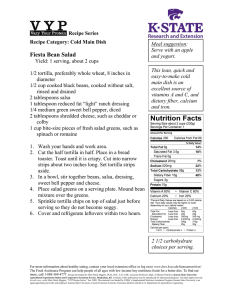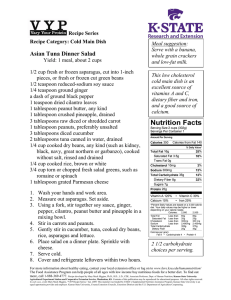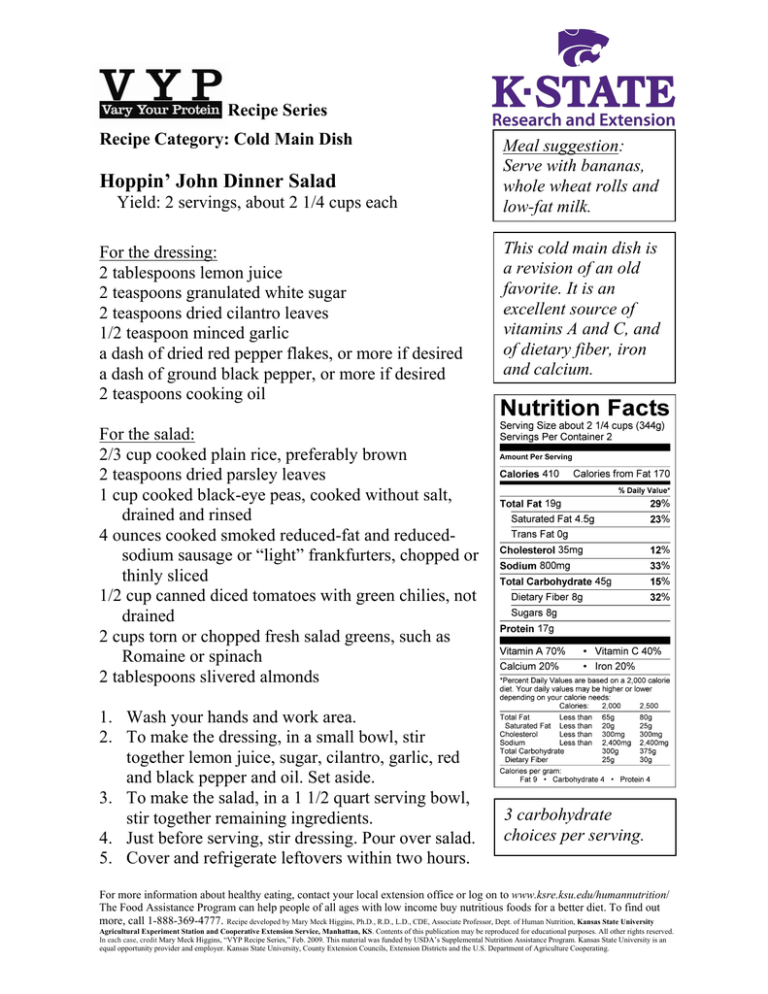
Recipe Series
Recipe Category: Cold Main Dish
Hoppin’ John Dinner Salad
Yield: 2 servings, about 2 1/4 cups each
For the dressing:
2 tablespoons lemon juice
2 teaspoons granulated white sugar
2 teaspoons dried cilantro leaves
1/2 teaspoon minced garlic
a dash of dried red pepper flakes, or more if desired
a dash of ground black pepper, or more if desired
2 teaspoons cooking oil
Meal suggestion:
Serve with bananas,
whole wheat rolls and
low-fat milk.
This cold main dish is
a revision of an old
favorite. It is an
excellent source of
vitamins A and C, and
of dietary fiber, iron
and calcium.
For the salad:
2/3 cup cooked plain rice, preferably brown
2 teaspoons dried parsley leaves
1 cup cooked black-eye peas, cooked without salt,
drained and rinsed
4 ounces cooked smoked reduced-fat and reducedsodium sausage or “light” frankfurters, chopped or
thinly sliced
1/2 cup canned diced tomatoes with green chilies, not
drained
2 cups torn or chopped fresh salad greens, such as
Romaine or spinach
2 tablespoons slivered almonds
1. Wash your hands and work area.
2. To make the dressing, in a small bowl, stir
together lemon juice, sugar, cilantro, garlic, red
and black pepper and oil. Set aside.
3. To make the salad, in a 1 1/2 quart serving bowl,
stir together remaining ingredients.
4. Just before serving, stir dressing. Pour over salad.
5. Cover and refrigerate leftovers within two hours.
3 carbohydrate
choices per serving.
For more information about healthy eating, contact your local extension office or log on to www.ksre.ksu.edu/humannutrition/
The Food Assistance Program can help people of all ages with low income buy nutritious foods for a better diet. To find out
more, call 1-888-369-4777. Recipe developed by Mary Meck Higgins, Ph.D., R.D., L.D., CDE, Associate Professor, Dept. of Human Nutrition, Kansas State University
Agricultural Experiment Station and Cooperative Extension Service, Manhattan, KS. Contents of this publication may be reproduced for educational purposes. All other rights reserved.
In each case, credit Mary Meck Higgins, “VYP Recipe Series,” Feb. 2009. This material was funded by USDA’s Supplemental Nutrition Assistance Program. Kansas State University is an
equal opportunity provider and employer. Kansas State University, County Extension Councils, Extension Districts and the U.S. Department of Agriculture Cooperating.

